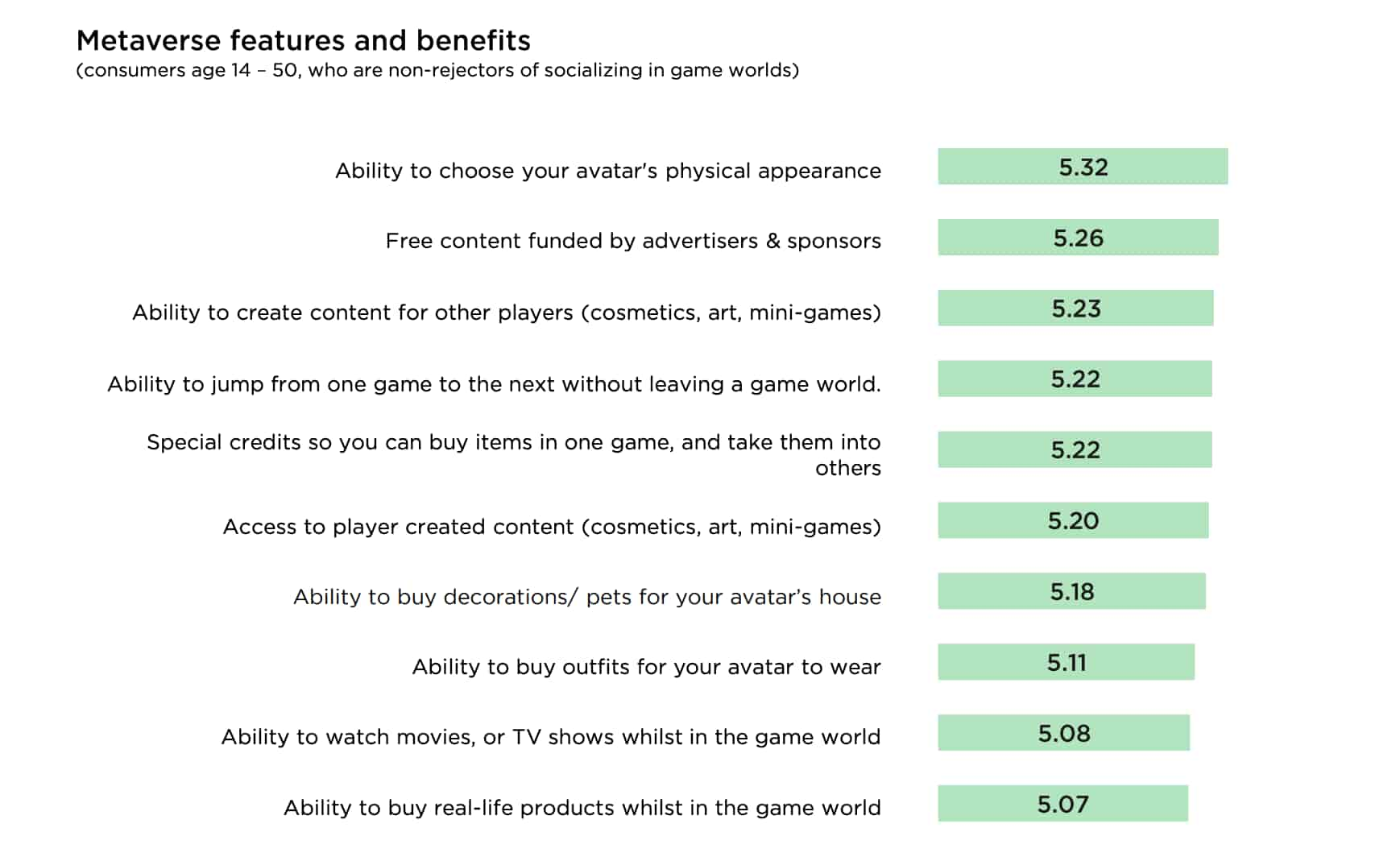
The term metaverse continues to be a runaway train in the AR and VR sectors and beyond. Though it has legitimate principles and promise — most notably presented in Matthew Ball’s Metaverse Primer — it’s been obscured through overuse and marketing speak.
Speaking of Ball’s Metaverse Primer, he writes in its introductory segment that it’s challenging to even define the term because it will be a moving target. But broadly speaking, and in our own words, it denotes virtual domains that host placeshifted participants for syncronous interaction.
But that doesn’t fully capture it, due to other Ball-defined variables such as identity, economy and interoperability. Mark Zuckerberg likes the term “embodied internet,” while Tim Sweeney calls it a “real-time 3D social medium where people can create and engage in shared experiences.”
But beyond tech visionaries, how do real consumers feel? Whether they know it or not, many already engage in metaverse-like experiences such as Roblox or Fortnite. A new report from NewZoo polls users on such sentiments, which we’re spotlighting for this week’s Data Dive.
Mixed Bag
So what did NewZoo’s research uncover? After surveying 5,500 people across the U.S., Europe and Asia, it found a mixed bag of metaverse sentiments. And because the Metaverse is still so nebulous and ill-defined, survey questions had to rely on familiar references such as MMOs.
Here’s the highlight reel:
— 38 percent of consumers who play MMOs like Roblox and Fortnite often or occasionally enter these worlds to socialize, rather than play the game itself.
— Geographically speaking, the above behavior is more common in China (53 percent) and the U.S. (34 percent) versus the U.K. (27 percent) and Japan (23 percent)
— When segmenting by age, those under 18 are 2x more likely than those over 35 to engage in this social-only MMO behavior.
— As for aspirational sentiments, among those interested in non-game activity within MMOs (socializing, attending virtual concerts) 56 percent are male and 42 percent are female.
— Among these metaverse-interested respondents, the biggest age group is 25-34 (29 percent), followed by 35-44 (27 percent), 18-24 (18 percent) and under 18 (15 percent).
— Synthesizing the above results, younger consumers over-index for current engagement in metaverse-like experiences, while older consumers are more aspirational in their interests.
— 70 percent of MMO players believe that social/interactive elements of a given experience will increase the amount of time they spend in those virtual worlds.
— As for non-gamers, 70 percent believe they will adopt gaming in the future (baseline average) while this figure jumps to 86 percent when there’s interest in in-game social interaction.
— Among those who express interest in social/interactive elements of MMOs, the top desired activity is getting together with family (75 percent), getting together with friends (74 percent) co-viewing TV & movies (72 percent) and attending virtual concerts (67 percent).
— As for features offered in virtual worlds, the most desired (mean score out of a total of 7) are avatar customization (5.32), ad-supported free content & media (5.26) ability to create content for other players (5.23) cross-game currency & interoperability (5.22) and ability to buy virtual goods to customize one’s virtual space (5.18).

The Metaverse Journey
As you can see in these survey results, some sentiments are aspirational (what do you want to see in a metaverse?) and some involve “metaverse-like” activity (MMOs). Again, these proxies and existing reference points are needed because a fully-formed metaverse doesn’t exist yet.
That gets to a question of timing. When will the metaverse arrive?. An “Oasis” style metaverse is likely decades away, if ever. But there will also be meaningful milestones along the way. Or as Endeavor VR’s Amy Peck puts it, “the metaverse is as much the journey as the destination.”
Similarly, MetaVRse founder and CEO Alan Smithson quipped on a recent panel discussion that we moderated: “We already have the metaverse: it’s called the internet.” Partly meant in jest, this is a key insight that goes back to the variance in definitions for what the metaverse is and isn’t.
That’s also to say that when examining the what and when of the metaverse, much of it will depend on how it’s defined. For example, Matthew Ball asserts that if the metaverse is confined to VR and AR devices, it will be a much different animal — and one that doesn’t scale as well.
If however, the metaverse involves all consumer access devices — as Mark Zuckerberg thinks it should — then we’re talking larger numbers. Back to Ball’s assertion above, much still needs to materialize so most analysis today is speculative. But it’s still worth tracking the journey.

